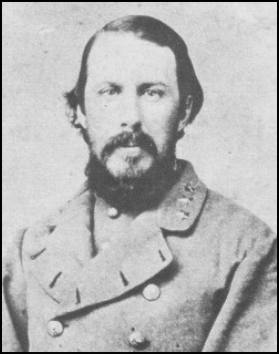Fact vs Interpretation at the Bloody Lane
There is a movement afoot to reinterpret key parts of the Maryland Campaign. In some cases, battlefield interpretation is being changed or removed based on new sources and/or new perspectives. I am all for reexamining history based on new or reassessed evidence, but in one case, the Bloody Lane, a serious error has been made – one that confuses fact with interpretation.

The specific case is this: Edward P. Alexander’s comment “The end of the Confederacy was in sight” was long a key element of the narrative of that action. However, recent scholarship has revealed at Alexander wasn’t present at the battle. A respected historian has since railed against his comment as being false and irrelevant “because he wasn’t even there.” It has been removed from a sign on the battlefield also.
If Alexander was trying to give an account about something he did not witness, that is one thing, and it should not be considered as a valid first-hand account of the battle. But Alexander’s “end of the Confederacy” comment is not fact, it is interpretation – his opinion and perspective after talking with people who were there at the battle. The people he spoke with obviously felt that they had been on the precipice of final defeat during that action. That perspective should not be discarded.
Alexander’s perspective on Antietam falls into something of a gray area – a contemporary secondary source, not unlike George Templeton Strong or Mary Chesnut. He speaks with authority and immediacy, about as much as one can without actually being there.
If one quotes Alexander’s interpretation, it would be good to point out that he was on detached service at the time, but he developed this informed perspective very shortly after rejoining the army. This is also not unlike Chester Nimitz’ comment about the Marines on Iwo Jima as “uncommon valor was a common virtue.” He wasn’t present to witness the action, but after digesting the reports and information from participants, made the comment – which today is part of Iwo Jima’s lore.
Neither Alexander or Nimitz were present at the events they offered an interpretation of; but that does not mean we should throw out their opinions. In fact, there is considerable value in considering contemporary interpretations of events as a way of gauging immediate public opinion. As we consider and reconsider historical events, we must always keep in mind the difference between facts and interpretation. Both have value in helping us understand the past.
Depending when Alexander said it, he could have very well been taking the side of historians that considered Antietam as the turning point with the Emancipation Proclamation as the “end of the Confederacy” turning the war from political to moral and eliminating the possibility of foreign intervention on the side of the Confederacy. The United Sates required Frances’s intervention to win at Yorktown, and without Britain and/or France intervening on the side of the Confederacy, Gettysburg became less of a turning point. Thus Alexander’s comment could have been more of a post-war analysis than a real time interpretation, and may be added weight to an Antietam rather than a Gettysburg turning point in the war.
Did he not write that he was stationed in Shepherdstown at the time of the battle and further, that in the afternoon he was at Bolivar Hts watching the smoke of the conflict. How did it take recent scholarship to reveal [th]at he wasn’t present at the battle, as he said so himself.
Great point Chris!
Thanks!